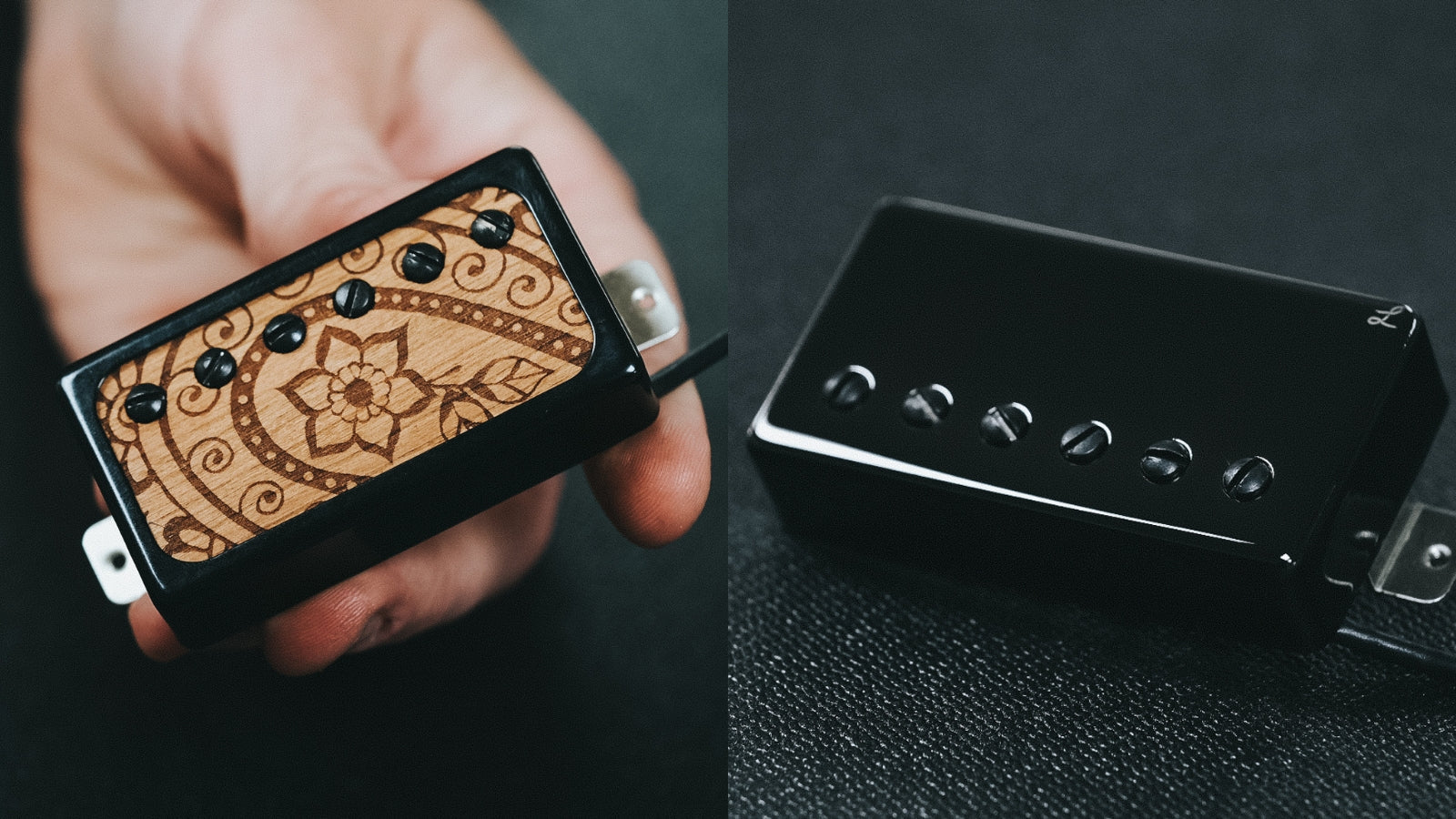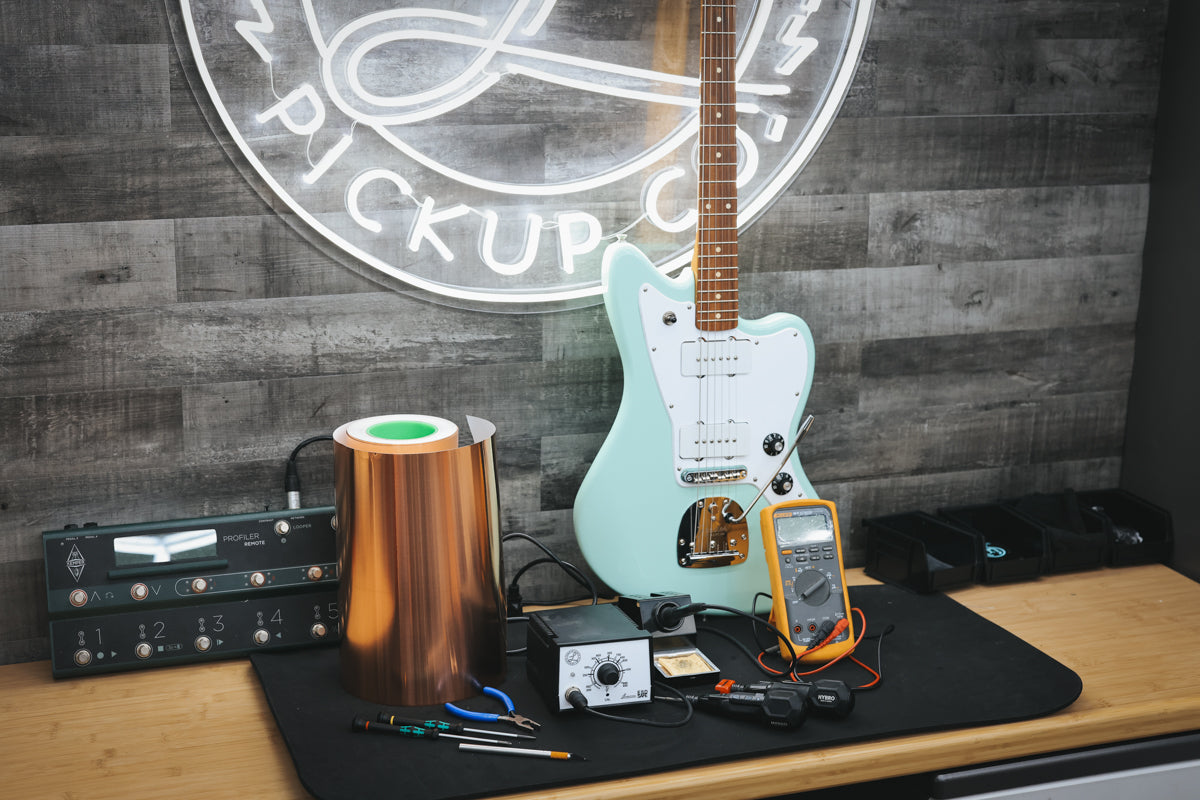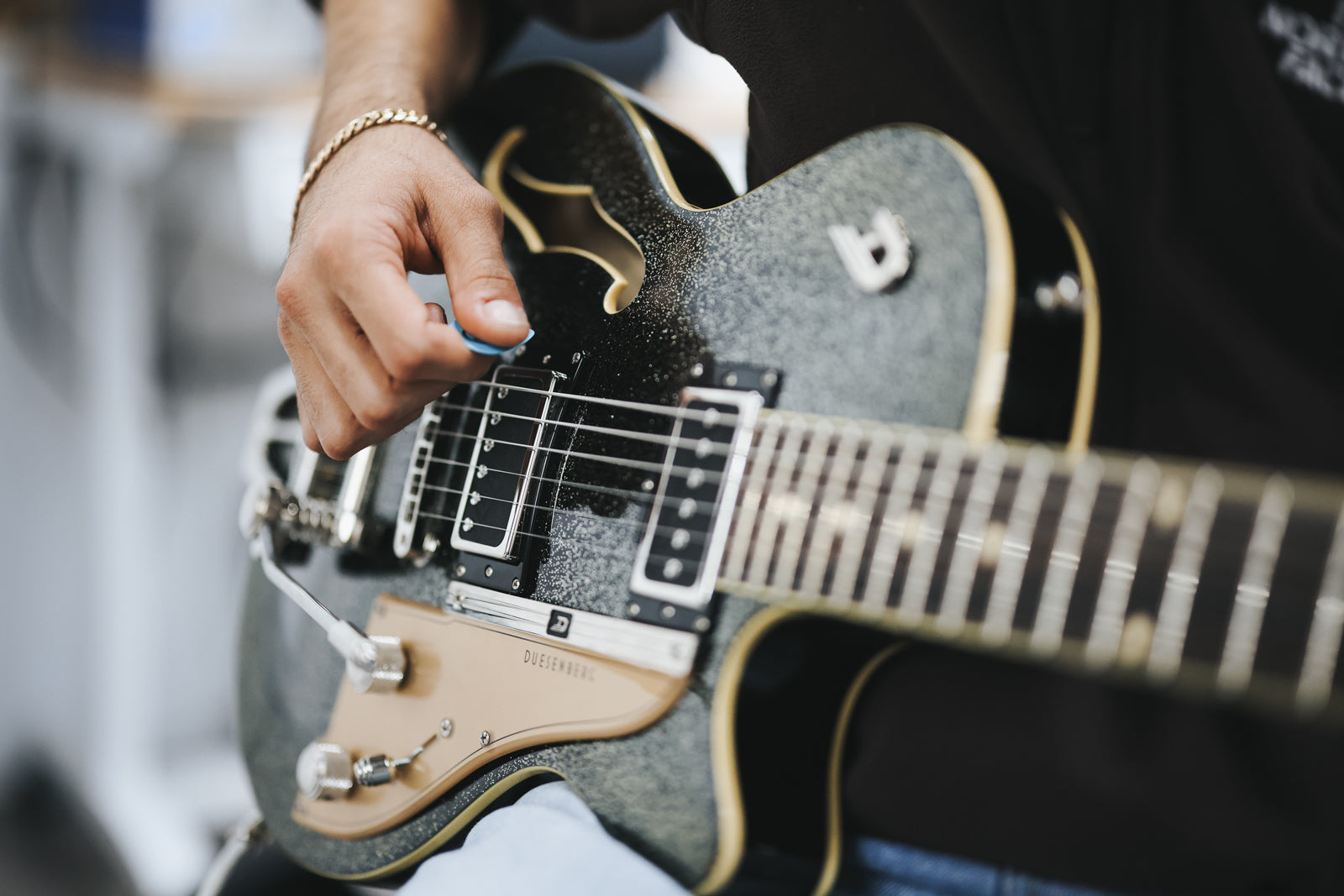
Humbucker Pickup Covers
Hello guitar player, let's talk pickup covers! There are a bunch of different types, shapes, finishes, and yes, even materials to choose from. So, which one is right for you, and which variables actually impact your tone? Humbuckers have metal covers, while single coils don’t. Not so fast, my friend, we got you. In this post, we will discuss what humbucker covers are, what they do and don’t do, and why swapping them out yourself is possible, but not recommended. If you’re not even sure about the whole humbucker vs single coil thing, don’t worry – we have a separate guide on that topic too, which you can check out here: humbucker vs single coil.

What Are Humbucker Pickup Covers
Let’s start with the basics: what is a humbucker pickup cover, anyway? In simple terms, it’s a cover or casing that fits over a humbucker pickup (the dual-coil pickups found in many guitars). Most humbucker covers are made of metal, commonly nickel silver, which is a metal alloy known for its sonic transparency. The cover typically has openings (or holes) for the pickup’s pole pieces (those little screws or slugs that peek through), unless it’s a solid cover design. By contrast, single-coil pickups (like those in a Strat or Jazzmaster) usually have plastic covers, and some pickups skip covers entirely for an “open coil” look.
Humbucker covers come in a variety of finishes and materials. The classic Gibson-style cover is plated in chrome or nickel for that shiny silver look, but you’ll also find covers in gold, black chrome, raw nickel, and even unusual materials like plastic or wood. This gives the guitar a clean, classy appearance. Think of the difference: a pair of exposed black bobbins versus a smooth chrome cover; each has its own vibe. Some players love seeing the coils (the zebra bobbin look screams rock ’n’ roll), while others prefer the understated elegance of covered pickups.

It’s worth noting that a high-quality humbucker cover made from nickel silver will have minimal impact on your tone. Nickel silver (despite its name, it actually contains no real silver – it’s mostly copper, nickel, and zinc) is prized because it only slightly alters the pickup’s magnetic field and electrical properties. Brass or steel covers, on the other hand, tend to “warm up” the tone by cutting some high frequencies, sometimes more than the player realizes. In short, not all covers are equal: the material and thickness matter for both tone and quality. Most major guitar brands are aware of this; for example, Gibson uses nickel-silver covers on their pickups to preserve the vintage tone, and many boutique pickup makers (like we do here at Lambertones) insist on nickel silver for the best sonic results whenever possible. All Filter’Tron style covers are still made out of brass, but that’s an intentional choice to affect the tonality of the EQ curve for that pickup style.
So, humbucker pickup covers are those metal (usually nickel silver) caps over your humbucker pickups. They make your guitar look cool, in my opinion, and can even influence the sound a bit based on what material and style you choose. Next, let’s answer why you’d want them in the first place.
What Are Humbucker Pickup Covers For
Why do humbuckers even have covers? Do they serve a real purpose, or are they just for looks? It turns out pickup covers do have several purposes. Let’s break down the main reasons humbucker covers exist and what they do for you and your guitar:
Shielding and Noise Reduction
One big reason humbucker covers were introduced is for shielding. If you’re like ‘What the heck is shielding, and do I need that?’ Please read our blog post about electric guitar and bass shielding here.
A metal cover can act like a tiny Faraday cage around the pickup, blocking some electromagnetic interference. In practice, this means the cover helps reduce electrical noise and hum from external sources. Remember, humbucker pickups are already designed to cancel hum by using two coils (hence the name hum-bucker), but a grounded metal cover adds an extra layer of noise reduction by shielding the coils from radio-frequency interference, electro-magnetic interference, and other sources creating hum or “ground buzz”. If you play under bright stage lights or near other electronic equipment, that shielding can be a blessing. (Ironically, if a cover isn’t installed properly, it can cause microphonic feedback, a SHOCKING vibrating and squealing sound that is absolutely hot garbage offensive to everyone's ears. So, making sure your humbucker covers are properly installed and wax-potted will avoid this nightmare. Overall, though, the cover’s intended purpose historically was to make the pickup quieter and more resistant to interference.
Protection of the Pickup
Another purpose of a pickup cover, not just for humbuckers, is legitimate physical protection. The cover creates a barrier between the delicate pickup coil(s), magnets, jumper wires, tape, and other components, and the outside world. Without a cover, the coils and pole pieces are exposed to dust, sweat, and whatever else flies around during a gig or practice session. Over time, uncovered pickups can accumulate dust and dirt, and in a worst-case scenario, moisture can collect on the copper coil wire or magnets, causing the material to erode. Even changing the strings, with uncovered pickups, means you need to be a little bit more careful, because all it takes is a slight nick on one coil wire and your tone is dead. A metal cover keeps all that vulnerable stuff sealed away. It’s like putting armor on your pickup, guarding it from debris and accidental damage. If you’ve ever seen an older guitar with rusty or dirty pickups, you’ll appreciate how a cover could prolong the life of the pickup (and maintain resale value by keeping things neat). So, one big “what for” of humbucker covers is protecting the tone-producing parts of your pickup so you can play without interruption for many many years.

Aesthetic Appeal and Style
We can’t ignore the obvious: pickup covers look clean! Guitar aesthetics are a personal thing, and covers give you another way to customize the look of your instrument. Here at Lambertones, we have a “filter cover” which gives a super crisp and dressed-up look, combining the cover concept with a hint at what’s underneath. It doesn’t protect the coils and magnets as much, but the visual aesthetic is awesome. Humbucker covers come in all sorts of finishes and even engravings, allowing you to match your pickups to your guitar’s hardware or vibe. On the other hand, leaving humbuckers uncovered showcases the dual coils (often in black or zebra patterns), which many associate with a harder rock look. Neither is “right” or “wrong”, it’s all about what inspires you. In short, humbucker covers are an easy way to change your guitar’s visual vibe. Whether you want the sleek sophistication of covered pickups or the rawness of open coils, the choice is yours. The electric guitar pickup cover is essentially a cosmetic upgrade and a piece of functional hardware at the same time.
Subtle Tone Shaping
Aside from shielding and looks, humbucker covers do have a subtle effect on your tone, which some players actually seek out. As mentioned above, putting a metal cover over a pickup will typically warm up the tone slightly, attenuating a bit of the high-end frequencies, resulting in a smoother and less bright sound. For a player who finds their uncovered pickup a tad too harsh or biting, adding a quality nickel silver cover can mellow out those highs just a touch and if you want to go further, install a brass humbucker cover to add a bit more warmth to “round” out your tone. This is especially true if the cover is soldered on and the pickup is wax potted with the cover; the highs are dampened a smidge, which jazz and blues players might appreciate for a sweeter tone. However, the key is using a good cover: nickel silver covers have only a slight effect on tone, whereas brass covers can really dull the sound.
Many modern pickup covers are designed to be as tonally transparent as possible (so that you don’t lose clarity). If you ever A/B test the same pickup with and without a nickel silver cover, you’ll notice the covered version may sound just a hair warmer or less sharp on the treble. It’s a subtle tweak, but it’s part of the reason why players will debate covered vs uncovered pickups endlessly on forums. Bottom line: pickup covers are also used to fine-tune your tone to personal taste, albeit in a minor way.

Wrapping Up
Now that you know what humbucker covers are and why guitarists use them, let’s get hands-on. Maybe you have a guitar with uncovered humbuckers and you’re thinking of adding covers for that vintage look (and the slight tone tweak), or you have old covers you want to swap out. How do you actually install humbucker pickup covers yourself? Good news: it’s not too hard! BUT! There are a few things to know that can save you time and money. Let’s walk through those steps.
By now, we’ve covered a lot of ground about humbucker pickup covers (pun intended). We talked about what they are (metal shields for your pickups that can be made of nickel silver and other materials), what they’re used for (from shielding and protecting to styling and subtle tone tweaking), and below we’ll share a little about why DIY swapping them yourself comes at a risk. For many beginner guitarists, details like pickup covers might seem small, but they’re part of the bigger puzzle of guitar tone and playability.

Why Swapping Humbucker Covers Is Risky
Swapping humbucker pickup covers at home might seem like a simple mod, and truthfully, it is. BUT it comes with some hidden risks, especially if you're not going to re-wax potting the pickup afterward. Wax potting is what keeps the internal components stable and prevents them from vibrating and creating that excruciating squealing feedback noise, and no, this isn't the cool hard rock kind of feedback. Without wax potting it, your pickup cover and coils have the potential to move just enough to cause unwanted microphonic feedback, especially at higher gain or volume levels. This results in piercing squeals or howling. If you’re doing the swap yourself and skip the re-potting step, you’re essentially opening the door for tone-killing noise. So if you're not confident in sealing things back up with wax, it's best to let a pro handle it—or go with pre-covered, pre-potted pickups right out of the box.
If you’re looking for a “tone-grade”, no, that is not a word (yet), and yes, we're working on getting it officially entered into Wikipedia. If you'd like to help us grow this new term, please leave a comment below with your favorite tone-grade. Also, go check out our best-selling pickups! All wax-potted and ready to rock, we specialize in clear, dynamic, and articulate guitar tone - all handmade here in Redlands, California. Welcome to the family!



Leave a comment
This site is protected by hCaptcha and the hCaptcha Privacy Policy and Terms of Service apply.